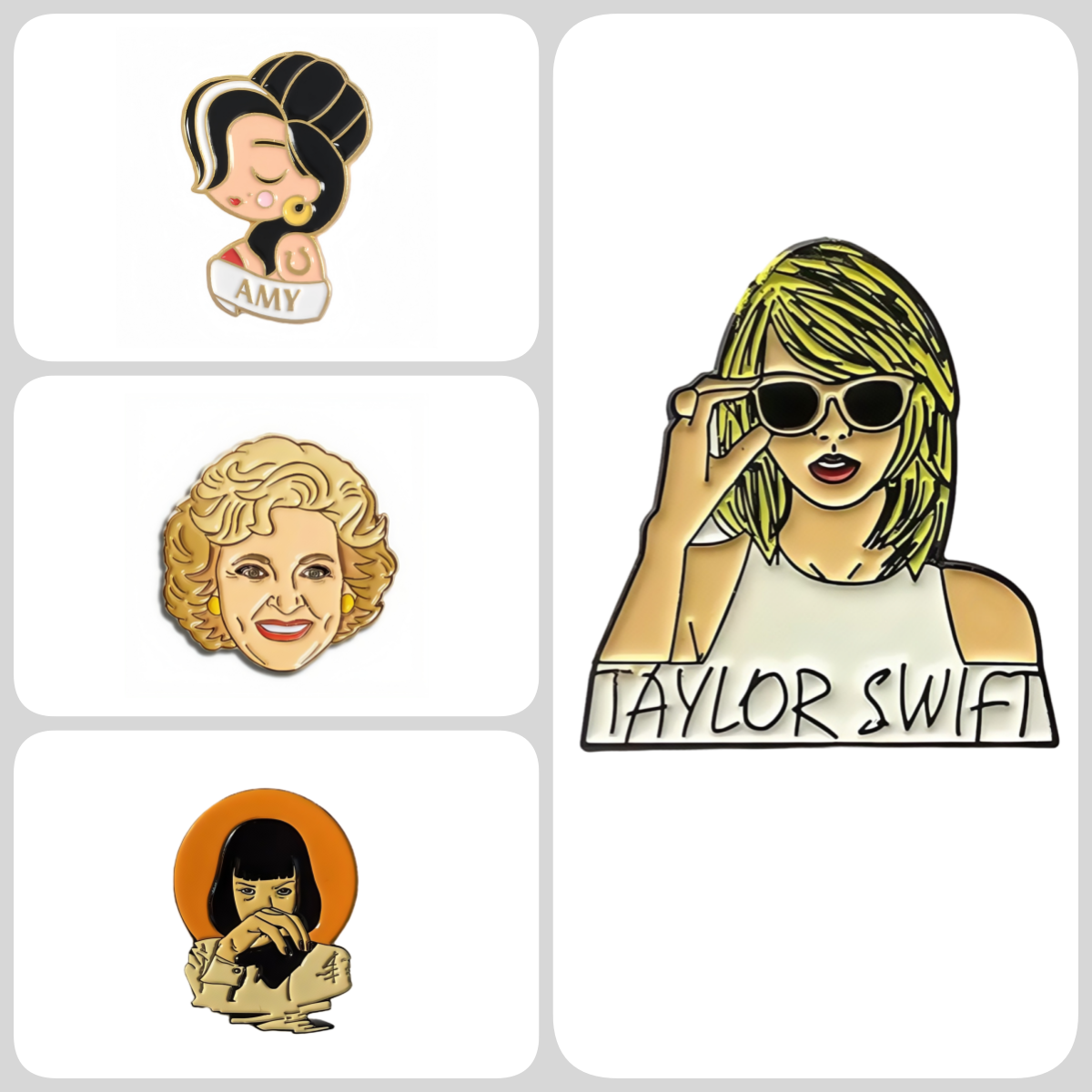At first glance, lapel pins and enamel pins look like the same accessory. Many people even use the terms interchangeably. But while every enamel pin is technically a lapel pin, not every lapel pin is an enamel pin. Understanding this distinction is helpful if you’re ordering custom pins, starting a collection, or simply curious about pin culture.
1. Lapel Pins: The Broad Category
A lapel pin refers to any small decorative pin worn on clothing, traditionally on the lapel of a suit jacket. Historically, lapel pins were associated with status, politics, and membership. Military insignias, fraternity emblems, corporate awards, and political campaign pins all fall into this category.
Over time, lapel pins have expanded far beyond formal wear. Today they can be worn on backpacks, hats, denim jackets, or displayed on pin boards. Importantly, lapel pins can be made in many different ways, including:
-
Die-struck metal pins (no color, just polished or antiqued metal)
-
3D molded pins (sculptural, raised designs)
-
Printed pins (photographic detail or gradient colors)
-
Rhinestone pins (decorative with stones or crystals)
-
Enamel pins (the most popular style today)
In other words, lapel pin is the umbrella term that covers every type of decorative pin.
2. Enamel Pins: The Artistic Subset
An enamel pin is one specific type of lapel pin. The design is stamped or molded into metal, and the recessed areas are filled with colored enamel. This enamel is then baked or hardened, resulting in a vibrant, durable finish.
There are two major styles:
-
Soft enamel pins – Colors sit lower than the raised metal outlines, creating a textured feel. Popular for trendy designs and collectibles.
-
Hard enamel pins – The enamel is polished flat with the metal edges, giving a smooth, jewelry-like surface. Preferred for premium or professional designs.
Enamel pins are prized for their ability to reproduce detailed artwork with bright colors. They’ve become especially popular among independent artists, pop culture fans, and collectors worldwide.
3. Key Differences in Use and Culture
-
Lapel pins are often formal, used for recognition, branding, or symbolism (think corporate logos, national flags, or award pins).
-
Enamel pins lean more casual, playful, and creative — perfect for personal expression, fandoms, or fashion.
Collectors often see enamel pins as mini pieces of wearable art, while lapel pins in general carry a sense of tradition and ceremony.
4. Quick Comparison
| Feature | Lapel Pin | Enamel Pin |
|---|---|---|
| Definition | General category of all decorative pins | Subset of lapel pins with enamel coloring |
| History | Formal wear, politics, recognition | Modern collectible culture, artist merch |
| Design Styles | Metal, 3D, printed, rhinestone, enamel | Hard enamel, soft enamel |
| Uses | Awards, corporate branding, uniforms | Fashion, self-expression, fandom |
| Look & Feel | Can be metallic, minimalist, or ornate | Always colorful, polished, eye-catching |
Final Takeaway
-
All enamel pins are lapel pins.
-
But not all lapel pins are enamel pins.
If you want tradition and formality, go with a lapel pin. If you want vibrant art you can wear or trade, enamel pins are your best choice.


